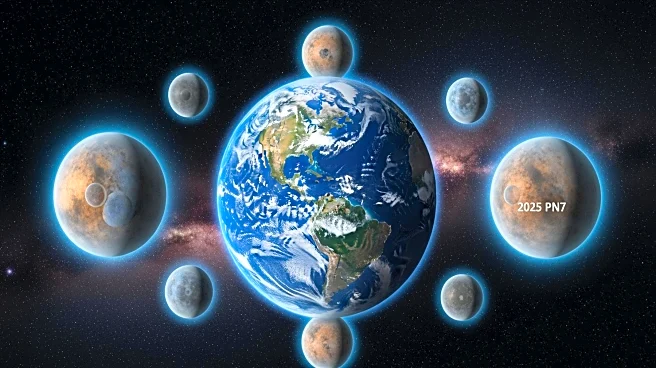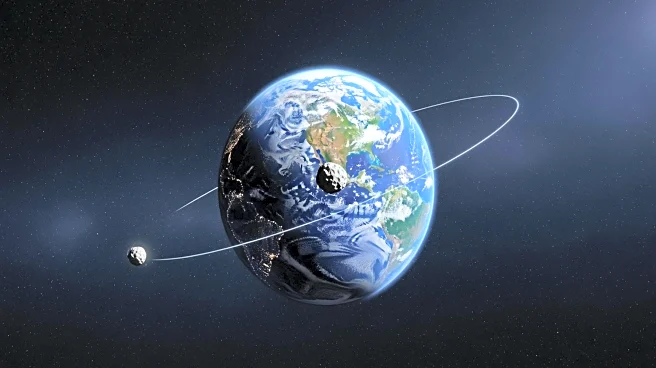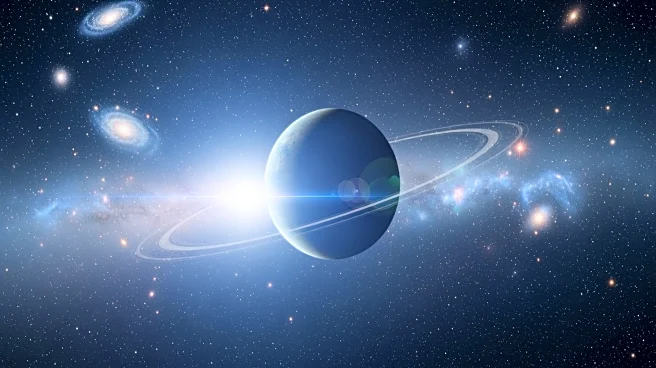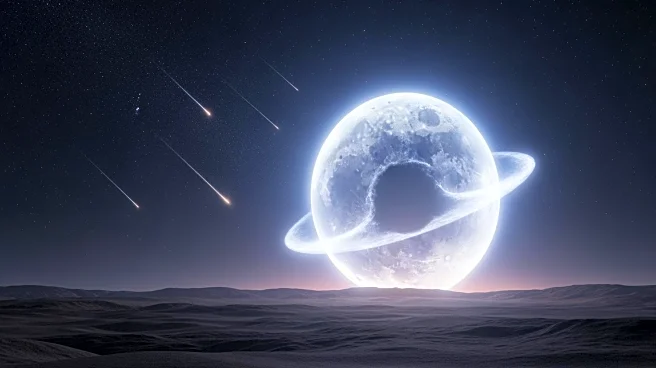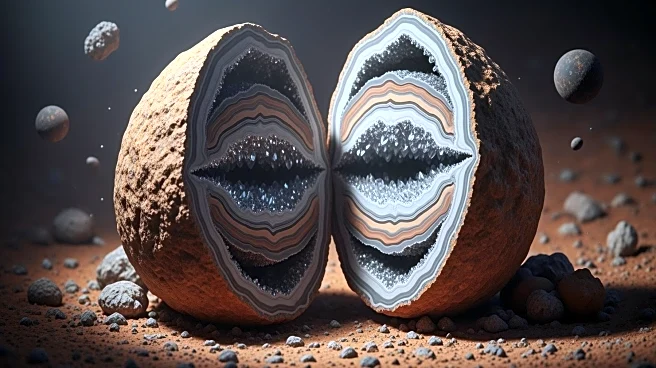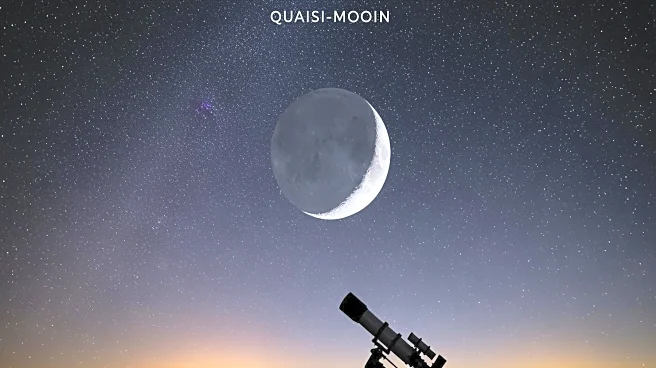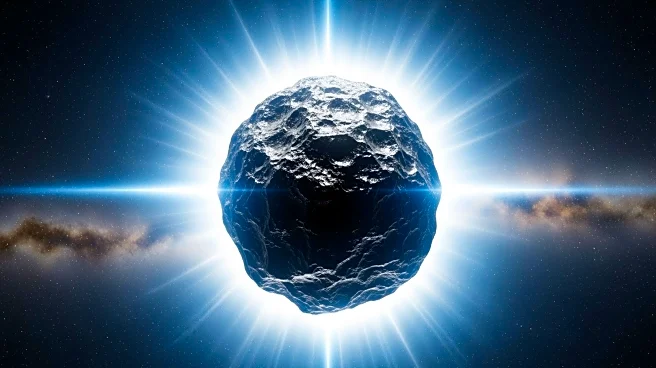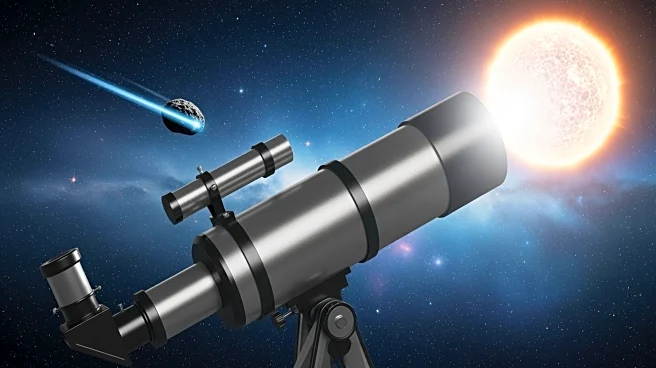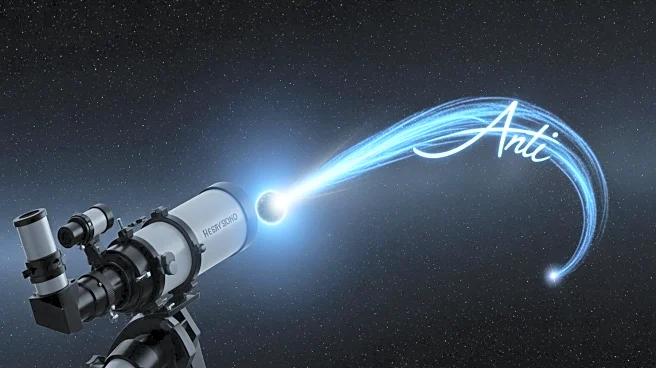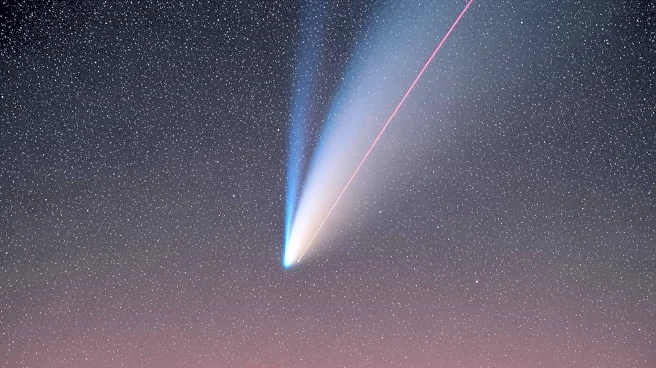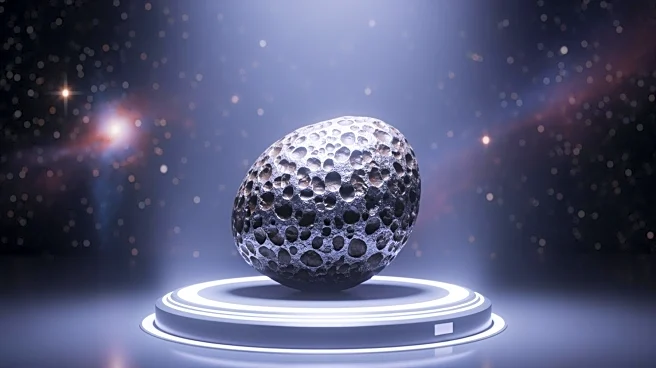What's Happening?
Astrophysicists have identified at least six quasi-moons, including the much-discussed 2025 PN7, in loose orbit around Earth. These quasi-moons are not true moons but are asteroids that travel around the sun
in near-lockstep with Earth, making them appear as if they are orbiting the planet. The discovery was made by researchers at a facility in Haleakala, Hawaii, using the Pan-STARRS telescope. The quasi-moon 2025 PN7, part of the Arjuna asteroid group, has been a close neighbor to Earth for approximately 60 years and is expected to remain so until 2083. Unlike the actual moon, these quasi-moons are not gravitationally bound to Earth, and their presence has no significant gravitational impact due to their small size.
Why It's Important?
The identification of quasi-moons like 2025 PN7 provides valuable insights into the dynamics of near-Earth objects and their interactions with our planet. Understanding these celestial bodies can enhance our knowledge of the solar system's structure and the potential risks or benefits they may pose. While these quasi-moons do not significantly affect Earth due to their small size, their study can contribute to broader astronomical research and the development of strategies for monitoring and potentially mitigating asteroid threats. The discovery also highlights the capabilities of advanced telescopes like Pan-STARRS in identifying and tracking small celestial objects.
What's Next?
The quasi-moon 2025 PN7 is expected to remain in Earth's vicinity until 2083, after which it will drift away. Researchers will continue to monitor these quasi-moons to better understand their orbits and potential interactions with Earth. The ongoing development of larger and more advanced telescopes, such as the Rubin Observatory, will likely lead to the discovery of additional quasi-moons and other near-Earth objects, further expanding our understanding of the solar system.
